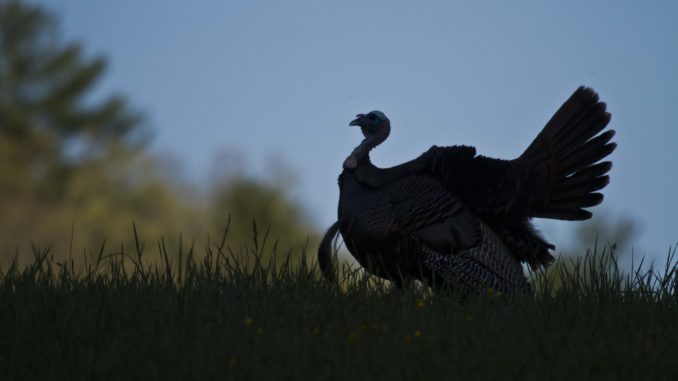
Early season gobblers provide hunters with plenty of opportunities, but they also present a unique set of problems. Two of the Carolinas’ best turkey hunters discuss ways to make the days that kick off the season productive.
Early season turkey hunting offers great potential for success but can be littered with obstacles along the way. Seasoned hunters find ways to navigate around impediments and tag their gobbler.
Two of the top turkey hunters in the Carolinas, Darrell Madden and Steve Cobb, share some of their secrets to success learned through experience for early season turkey hunting success.
SCOUTING IS FOREVER
Darrell Madden of Semora, N.C., has taken multiple turkey grand slams (Eastern, Merriam’s, Rio Grande, Osceola) and has developed successful strategies for taking gobblers in various situations.
Madden said one of the most crucial is scouting with a purpose.
“Scouting never stops, whether preseason, during the season or anytime I’m in the woods, I’m still learning the lay of the land to help me with turkeys,” he said. “Having specific goals beyond simply hearing a turkey gobble on the roost is crucial.”
Madden said his golden rule of scouting is to get in, learn stuff and get out without turkeys knowing her was ever in the woods.
“I simply don’t call to turkeys during preseason or when scouting,” Madden said. “Different factors are at play when scouting versus hunting, and one is to learn where birds roost to give me a starting point. But I’m looking for much more, because that’s not always a high percentage opportunity for killing a gobbler.
“I want to know a gobbler’s travel route for locating hens and his feeding habits after leaving the roost. If fly-down time doesn’t result in a dead gobbler I want other options immediately available. My scouting purpose is to learn the habits of several gobblers at various times of the day.”
Madden said this kind of information gives him an edge, allowing him to go directly to an area where a gobbler already wants to be at different times of the day.
“Successful turkey hunting requires backup plans to your backup plans, so I try to have as many options as possible,” he said.
COYOTE CONSIDERATIONS
Madden said that the influx of coyotes into the Carolinas has had an impact on turkey behavior.
“I think turkeys gobble less overall than prior to coyotes being a big factor,” he said. “Certainly, some still gobble their heads off, but often I hear a couple of gobbles, then they hush. Lots of hunters get discouraged too quick and leave that bird, but often, that gobbler is still in play; he’s just being cautious.”
He said the pressure from coyotes and hunters, plus lower turkey numbers in many areas, has taught him to be more passive in his hunting. To be consistently successful, he’s willing to get into stealth mode, slow down and be patient.
“I’ve found it’s best to sit on the turkeys longer than years ago, pre-coyotes,” he said. “And this slowing down not only produces more gobblers for me, it’s better for getting older, long-spurred birds into range.”
SETUP IS CRUCIAL
Not all trees or setup positions are equal in terms of being the best spots to call a turkey.
“I’m constantly scanning the woods for possible setup positions as I’m hunting, because that’s a huge part of actually killing a gobbler,” Madden said. “Sometimes, I only have a few seconds to pick the spot once a gobbler is committed and approaching.”
Madden said waiting until the moment of reckoning when a gobbler commits and is quickly approaching is a recipe to make the wrong choice.
“A good setup is much more than just picking a big, obvious tree,” he said. “Sometimes, that obvious choice works out, but I’ve learned the most obvious spot is not always the best; the top choice is often more subtle.
“I want a setup with cover, but not in a thicket where I can’t make gun adjustments or slight movements when a gobbler makes a last-second course change. I want shade and shadows to blend with my cover. Don’t sit in a bright, sunlit spot, because regardless of the size of the tree, it’s like having a spotlight telling the gobbler to ‘look here’.”
Madden said the bottom line is getting in a setup that hides you but enables you to see the gobbler before you can be seen. Wearing a camo pattern that blends with the foliage where you’re hunting helps.
“Seeing a gobbler first, while being well concealed, gives me an edge,” he said. “I can then visually track the gobbler’s movement and, if I have to make any movement-related adjustments or finishing calls, I can choose the time and use terrain and vegetation to my advantage — not to my detriment.”
“Good calling is certainly important and is a key to getting a gobbler interested and approaching,” Madden said. “But once he’s on the way I believe success at that point is 75-percent setup, 10-percent calling and the reminder simply woodsmanship, timing and good or bad fortune. Stack the odds in your favor with a good setup.”
IT’S NEVER TOO LATE
Steve Cobb, a Hunter Specialties Pro Staff member from Union S.C. said many hunters chase gobblers early, then leave, thinking the time to kill a longbeard has passed.
“Actually, the prime time to kill a gobbler can be later, not right after birds fly off the roost,” Cobb said. “A multitude of issues, some beyond your control — such as live hens — can complicate the situation and cause a gobbler to go in any direction but yours.”
Cobb said the early season is often when gobblers get “henned-up”, a common problem for hunters. He’s learned that if he can’t get out before dawn his odds of success are still high.
“I hunt when I can, and if I can’t get into the woods until an hour or two after dawn, I’m not discouraged,” he said. “In early season, gobblers often get with hens quickly, but once hens begin to move off, the odds for success improves dramatically.”
Cobb said a gobbler without hens will move and gobble trying to locate hens. If they hear good calling from a hunter, even one just getting into the woods, they often respond aggressively.
“I have actually slipped into the woods where I knew gobblers were likely to be and had an immediate response,” he said. “At this point, the game is on, and I’ve been looking at a gobbler only a couple minutes after my first call. Other times, I’ve had to make multiple moves and calls before striking a gobbler.”
Cobb said he’ll slip through the woods, using woods roads or trails to cover ground quietly.
“Use caution when getting into the woods to not alert nearby turkeys,” he said. “Good calling, woodsmanship and patience are prime allies to success.”
DECOYS: LIFELIKE IS CRUCIAL
Both Cobb and Madden said that lifelike decoys can be a game changer.
“I’ve not always been a huge fan of decoys, because results were inconsistent,” Madden said. “They would work incredibly well at times, but seemed to create more problems than advantages at other times. But I’ve learned that the remote-controlled jake decoy is very dependable for my hunting style.”
Madden said a remote-controlled jake decoy gives the lifelike movement that’s often needed to fool an old, wary gobbler.
“But it’s also that a jake would have the audacity to be in plain view,” he said. “When the adult gobbler sees the jake fan and associated movement, it’s usually game over. I can manipulate the decoy to turn left and right, but if I turn his tailfan toward the old gobbler, that’s more than he can stand.”
Steve Cobb said he generally uses adult gobbler decoys, and that position of the decoy is crucial.
“The challenge of another gobbler at the source of hen calls is often enough to get a gobbler to approach,” he said. “I’ll place the decoy where the incoming bird will see the full fan. If it’s an older bird you’re calling, when he gets a visual on the full-fan decoy, odds are excellent he’s going to accept that challenge and approach.”

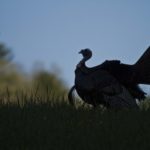
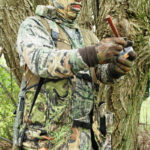
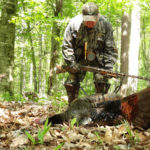
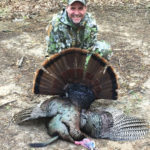
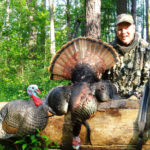
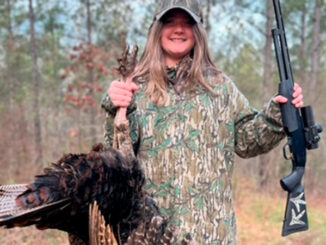
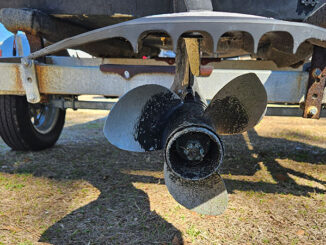
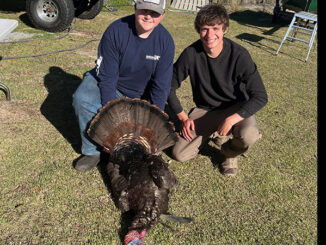

Be the first to comment